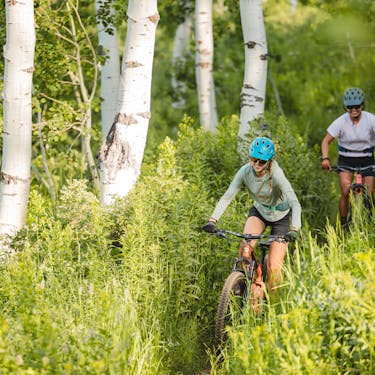
Summer Workouts for Ski Season
Published on June 8, 2025
When the snow melts and the lifts stop spinning, the work doesn’t. Summer is your window to build strength, sharpen your skills, and reconnect with the mountain in a new way! Whether your winter goal is to chase deep turns off the Paradise lift, log ample time exploring extensive terrain, or just want to feel stronger and more balanced when the season arrives, training now sets the foundation for your best year yet.
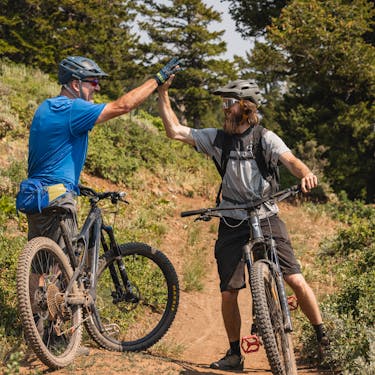
Should Ski Workouts Focus on Strength or Cardio?
The short answer? Both. Strength and cardio each play a vital role in preparing your body for the demands of skiing, but how you balance them should reflect the kind of skiing you plan to do.
A full day on the mountain isn’t just about power or stamina in isolation. It’s about being strong enough to hold an edge, quick enough to react to variable conditions, and conditioned enough to do it lap after lap.
1. Strength Builds Power and Injury Resilience
Strength training—especially for your legs, core, and posterior chain—helps you stay in control on variable terrain, absorb impact, and reduce the risk of common ski injuries. Strong muscles can help protect your knees and other joints from stress. It also improves your ability to generate power when carving or trying that new side hit.
2. Cardio Improves Endurance and Recovery
Aerobic training conditions your body to deliver more oxygen to working muscles and clear out fatigue faster. Whether skiing bell-to-bell or making big backcountry pushes, cardio helps your body keep up with your ambition and recover better between laps, days, or trips.
3. The Bottom Line
Want to charge through 1,000 feet of vertical without burning out? Focus on strength.
Looking to ski from first chair to last with minimal fatigue? Prioritize cardio.
In the cardio vs strength debate, fitness coach Alecia Williams notes that it really depends on the kind of skiing you're doing most often—or the kind of ski trip you're planning. “Committing to consistency over intensity is what’s going to get you ready,” says Williams.
Check out more ski training tips from Alecia Williams on her .
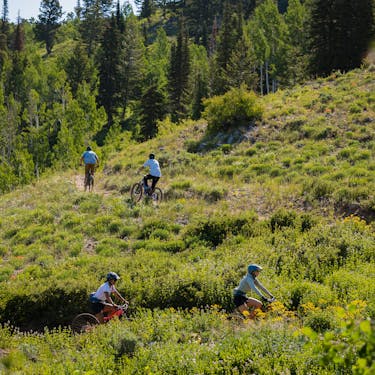
Ski-Specific Strength and Mobility
Skiing demands powerful legs, a stable core, and resilient joints that can handle anything from deep powder to steep moguls. These exercises train the movement patterns and muscles you’ll rely on when winter returns.
And the benefits go beyond just fitness:
- You will feel less sore the next morning: If you’ve ever had trouble walking the day after skiing, you’re not alone. Training your body ahead of time reduces muscle shock and minimizes post-ski soreness, also known as .
- You will be a better skier: that strength and endurance training improve performance.
- You will be more balanced on your skis: Strong muscles make balancing easier. In fact, strength training reduces fall risk by 15-25%—a clear win for anyone trying to stay upright in variable snow.
- You reduce your risk of injury: According to a by Orthopaedic and Sports Medicine professionals, strength training develops muscle size and control that support knee stability, key for injury prevention, particularly protecting against ACL strain.
1. Functional Strength and Mobility for Skiers
Functional training builds the stability, power, and joint resilience that skiing demands. These movements train your body to handle the real-world mechanics of carving, absorbing impact, and staying balanced in variable terrain.
Recommended: 2–3 sets, 10–12 reps per side for strength; 30–60 seconds per hold for core/mobility
- Lateral lunges: Build single-leg strength and control to mirror carving motions.
- Jump squats: Train explosive power and controlled landings.
- Side planks and glute bridges: Strengthen core stabilizers and prevent low back pain.
- TRX rows or pull-ups: Improve upper body control for balance and pole planting.
- Hip mobility drills and foam rolling: Keep joints limber and reduce tightness. Aim for 30–45 seconds per stretch or muscle group.
For more guidance visit, or check out this set of exercises from The Climb Clinic’s .
2. Plyometric and Balance Drills for Skiers
Plyometric and balance drills improve your agility, stability, and proprioception so you can stay centered, even when the snow isn’t. These exercises sharpen the fast-twitch coordination you’ll use in bumps, trees, and variable conditions.
Recommended: 2–4 rounds, 8–12 reps per drill
To build quickness, agility, and dynamic stability, key for handling variable snow:
- Skater jumps (side-to-side bounds)
- Single-leg deadlifts (balance and hamstring strength)
- Agility ladder drills (improve foot speed and reaction time)
- Bosu squats (stability under pressure)
3. Strength Circuits and Resistance Training for Skiers
Resistance training develops the raw power, muscular endurance, and coordination that let you ski longer and recover faster. These circuits blend strength and cardio to mimic the stop-and-go demands of a full day on the mountain, so your legs don’t quit before the lifts do.
Recommended: 2–3 full-body circuits/week. Each session can include 3 rounds of 6–8 moves, 45 seconds work / 15 seconds rest.
- Leg strength (weighted squats, step-ups)
- Core control (planks, bird dogs)
- Explosiveness (box jumps, kettlebell swings)
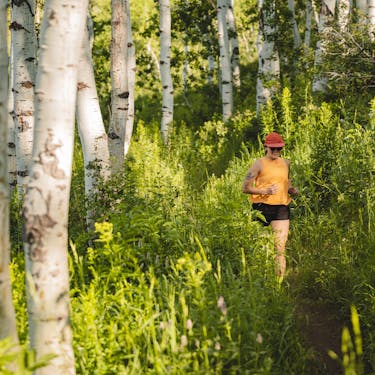
Summer Outdoor Activities to Boost Cardio Ski Endurance
Once your strength base is set, outdoor cardio becomes the perfect complement. It improves aerobic capacity, balance, and the mental edge you’ll want on big winter days.
Trail Running and Hiking for Ski Season
Running or hiking on uneven trails engages your stabilizing muscles and sharpens downhill footwork. The uphill grind builds leg endurance and lung capacity. For the right mix of moderate elevation training and soft footing, hit like Baggage Claim, Paper Airplane, and Woody’s World.
Nearby Ogden routes, such as Waterfall Canyon and Malan’s Peak, offer alternatives with more intense elevation gain.
Mountain Bike Training for Ski Season
Mountain biking strengthens your glutes, quads, and core, with the added bonus of technical terrain that keeps you mentally sharp. Ride trails like Woody’s World or Paper Airplane for moderate climbs and fun descents.
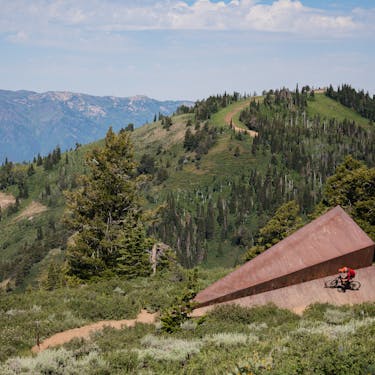
Sample Weekly Summer Ski Workout Schedule
Monday: Strength & Plyometrics - 45 sec work / 15 sec rest circuits
Tuesday: Interval Cardio - 30 to 45 min with hills or HIIT
Wednesday: Active Recovery + Mobility - Foam rolling, yoga, light hiking
Thursday: Strength & Power - Emphasis on squats, lunges, box jumps
Friday: Endurance Cardio - 45 min steady run, bike, or rower
Saturday: Mixed Circuit + Balance - Combine strength, agility, core drills
Sunday: Rest or Light Outdoor Activity - Trail walk, foam rolling
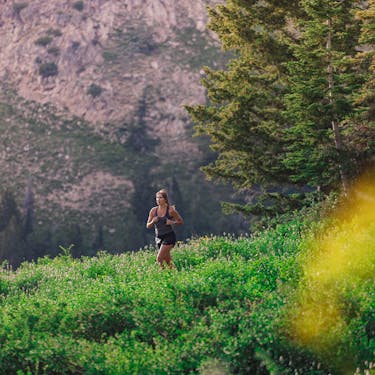
Summer Ski Training FAQs:
Q: Do strength workouts help as much as cardio?
A: Yes—probably more. Strength and balance keep you injury-free and powerful through variable terrain. Hike, ski, and run coach suggests prioritizing cardio if you're prepping for endurance on the slopes. But for big mountain days or attempting more challenging terrain, strength is key.
Q: Where can I train near Powder Mountain?
A: Our multi-use trails are open in the summer for hiking, running, and mountain biking. Check the trail map and before heading out.
Note: Due to ongoing construction, Powder Mountain will have limited terrain accessible during Summer 2025. We will open a select number of our multi-use trails for hiking, running, and mountain biking, but on-mountain services (i.e., dining, restrooms) will not be available, and parking will be restricted to specific lots and areas. .